
CeraVe Renewing Salicylic Acid Cleanser, Review exfoliator Buying Guide – Oemiu
CeraVe Renewing Salicylic Acid Cleanser: A Deep Dive into Exfoliation and Skin Health
In the vast landscape of skincare, finding a product that effectively cleanses, exfoliates, and addresses specific skin concerns can feel like searching for a needle in a haystack. CeraVe, a brand renowned for its dermatologist-developed formulas and focus on skin barrier health, offers the Renewing Salicylic Acid Cleanser, a product designed to tackle acne, texture irregularities, and dullness. But does it live up to the hype? This comprehensive guide will delve into the cleanser’s ingredients, benefits, potential drawbacks, and how it stacks up against other exfoliators on the market. We’ll also provide an extensive buying guide to help you navigate the world of exfoliating cleansers and find the perfect fit for your unique skin needs.
Unpacking the Formula: Ingredients and Their Roles
The CeraVe Renewing Salicylic Acid Cleanser’s efficacy lies in its thoughtfully curated ingredient list. Beyond simply washing away dirt and debris, this cleanser actively works to improve skin texture and clarity. The star ingredient, of course, is salicylic acid. This beta-hydroxy acid (BHA) is oil-soluble, allowing it to penetrate deep into pores to dissolve sebum, dead skin cells, and other impurities that contribute to breakouts and congestion. This deep-cleaning action makes it particularly beneficial for those with oily or acne-prone skin. Salicylic acid also boasts anti-inflammatory properties, helping to calm redness and irritation associated with acne.
Complementing the salicylic acid is a trio of essential ceramides (ceramides 1, 3, and 6-II). These lipids are naturally found in the skin and play a crucial role in maintaining the skin barrier, which acts as a protective shield against environmental aggressors and prevents moisture loss. By replenishing ceramides, the cleanser helps to strengthen the skin barrier, minimizing the potential for irritation and dryness that can sometimes occur with exfoliating cleansers. Niacinamide, another noteworthy ingredient, contributes to skin health by reducing redness, minimizing pore appearance, and improving overall skin tone. It’s a powerful anti-inflammatory and antioxidant that works synergistically with the other ingredients to promote a clearer, healthier complexion. Hyaluronic acid, a humectant, attracts and retains moisture, ensuring that the skin remains hydrated even after cleansing. This is particularly important because exfoliating cleansers can sometimes strip the skin of its natural oils. Finally, the formula is non-comedogenic, meaning it won’t clog pores, making it suitable for those prone to breakouts. The combination of these ingredients creates a formula that is both effective and gentle, addressing acne and texture concerns without compromising the skin’s barrier function. For those seeking a daily facial exfoliator, this product is a solid option.
How Does It Compare to Other Exfoliating Ingredients?
When choosing an exfoliator, you have several options, each with its own set of benefits and drawbacks. Salicylic acid, as found in the CeraVe cleanser, is a BHA known for its oil-solubility and ability to penetrate pores. Alpha-hydroxy acids (AHAs), such as glycolic acid and lactic acid, are water-soluble and primarily exfoliate the surface of the skin. AHAs are generally better suited for addressing fine lines, wrinkles, and hyperpigmentation, while BHAs are more effective for acne and oily skin. Physical exfoliants, such as scrubs with microbeads or sugar, provide immediate but often harsh exfoliation. They can be abrasive and may cause micro-tears in the skin if used too vigorously. Enzyme exfoliants, derived from fruits like papaya and pineapple, offer a gentler form of exfoliation, breaking down keratin proteins on the skin’s surface. They are a good option for sensitive skin types. The CeraVe cleanser strikes a balance by providing chemical exfoliation through salicylic acid while incorporating ingredients that support the skin barrier and minimize irritation. This makes it a suitable option for daily use, whereas more potent exfoliants may need to be used less frequently.
| Exfoliating Ingredient | Type | Benefits | Drawbacks | Suitable Skin Type |
|---|---|---|---|---|
| Salicylic Acid | BHA | Deep pore cleansing, acne treatment, reduces inflammation | Can be drying, may cause purging | Oily, acne-prone, combination |
| Glycolic Acid | AHA | Surface exfoliation, reduces fine lines and wrinkles, improves texture | Can be irritating, increases sun sensitivity | Normal, dry, mature |
| Lactic Acid | AHA | Gentle exfoliation, hydrating, improves skin tone | Less potent than glycolic acid, may cause mild irritation | Sensitive, dry |
| Physical Exfoliants (Scrubs) | Mechanical | Immediate exfoliation, removes dead skin cells | Can be abrasive, may cause micro-tears | Not recommended for sensitive or acne-prone skin |
| Enzyme Exfoliants | Enzymatic | Gentle exfoliation, suitable for sensitive skin | Less potent than AHAs/BHAs, may not be effective for severe acne | Sensitive, dry, normal |
The User Experience: Effectiveness and Potential Side Effects
The CeraVe Renewing Salicylic Acid Cleanser is designed for daily use, but individual experiences can vary depending on skin type and sensitivity. Many users report a noticeable improvement in skin texture after just a few uses. The cleanser effectively removes dirt, oil, and makeup, leaving the skin feeling clean and refreshed. The salicylic acid works to unclog pores, reducing the appearance of blackheads and whiteheads. Some users with acne-prone skin have also reported a reduction in breakouts and inflammation. However, it’s important to note that some individuals may experience a “purging” phase when first starting to use the cleanser. This is when the salicylic acid brings underlying impurities to the surface, resulting in temporary breakouts. While purging can be frustrating, it’s a sign that the product is working and usually subsides within a few weeks. To minimize the risk of purging, it’s recommended to start by using the cleanser once or twice a week and gradually increase frequency as tolerated. While the formula is designed to be gentle, some users with sensitive skin may experience dryness, redness, or irritation. This is more likely to occur if the cleanser is used too frequently or if other potentially irritating products are used in conjunction. To combat dryness, it’s essential to follow up with a hydrating moisturizer after cleansing. If irritation persists, it’s best to reduce the frequency of use or discontinue use altogether. It is always a good idea to consult a dermatologist to ensure the product is suitable for your unique skin concerns.
The cleanser has a gel-like consistency and a mild, slightly medicinal scent. It lathers well and rinses off easily, leaving the skin feeling clean but not stripped. The packaging is simple and functional, with a pump dispenser that allows for easy and hygienic dispensing of the product. Many appreciate that this is a wallet-friendly exfoliator, particularly as CeraVe is widely available. It’s also important to note that while the cleanser is effective for mild to moderate acne, it may not be sufficient for treating severe acne. In such cases, it’s best to consult a dermatologist for a more comprehensive treatment plan.
Maximizing Benefits and Minimizing Risks
To get the most out of the CeraVe Renewing Salicylic Acid Cleanser and minimize potential side effects, it’s important to use it correctly. Start by wetting your face with lukewarm water. Apply a small amount of cleanser to your fingertips and gently massage it onto your face in circular motions for 30-60 seconds. Avoid the eye area, as salicylic acid can be irritating to the eyes. Rinse thoroughly with lukewarm water and pat your skin dry with a clean towel. Follow up immediately with a hydrating moisturizer to replenish any moisture lost during cleansing. As mentioned earlier, it’s best to start by using the cleanser once or twice a week and gradually increase frequency as tolerated. Pay attention to how your skin responds and adjust the frequency accordingly. If you experience any dryness, redness, or irritation, reduce the frequency of use or discontinue use altogether. Always wear sunscreen during the day, as salicylic acid can increase your skin’s sensitivity to the sun. It’s also important to avoid using other potentially irritating products, such as harsh scrubs or toners, while using the cleanser. When introducing new skincare products, it’s always a good idea to patch test them on a small area of your skin first to check for any allergic reactions or sensitivities.
Exfoliator Buying Guide: Choosing the Right Product for Your Skin
Navigating the world of exfoliating cleansers can be overwhelming, with countless products promising to transform your skin. To make the process easier, consider the following factors when choosing an exfoliating cleanser:
- Skin Type: The most important factor to consider is your skin type. If you have oily or acne-prone skin, a cleanser containing salicylic acid or benzoyl peroxide may be beneficial. If you have dry or sensitive skin, opt for a gentler cleanser with lactic acid or enzyme exfoliants. If you have normal or combination skin, you can experiment with different types of exfoliants to see what works best for you.
- Exfoliating Ingredient: As discussed earlier, different exfoliating ingredients have different benefits and drawbacks. Consider your skin concerns and choose an ingredient that addresses them effectively. If you’re targeting acne and clogged pores, salicylic acid is a good choice. If you’re looking to improve skin texture and reduce fine lines, glycolic acid may be more suitable.
- Concentration: The concentration of the exfoliating ingredient is also important. Higher concentrations can be more effective but also more irritating. Start with a lower concentration and gradually increase it as tolerated. For example, a salicylic acid cleanser with 0.5% concentration is generally suitable for daily use, while a cleanser with 2% concentration may be better suited for occasional use.
- Additional Ingredients: Look for cleansers that contain other beneficial ingredients, such as ceramides, hyaluronic acid, and niacinamide. These ingredients can help to hydrate, soothe, and protect the skin barrier. Avoid cleansers that contain harsh sulfates, fragrances, or dyes, as these can irritate the skin.
- Formulation: Exfoliating cleansers come in various formulations, including gels, creams, and foams. Choose a formulation that you find comfortable to use. Gel cleansers are generally better suited for oily skin, while cream cleansers are better suited for dry skin.
- Reviews and Ratings: Before purchasing an exfoliating cleanser, read reviews and ratings from other users. This can give you valuable insights into the product’s effectiveness and potential side effects.
- Price: Exfoliating cleansers range in price from drugstore options to high-end brands. Consider your budget and choose a cleanser that offers good value for money.
Finding the right exfoliating cleanser is a process of trial and error. Don’t be afraid to experiment with different products until you find one that works well for your skin. And remember, consistency is key. Exfoliating regularly can help to improve skin texture, reduce breakouts, and promote a healthy, radiant complexion. When in doubt, always consult a dermatologist for personalized recommendations. Those seeking a more radiant complexion might explore daily facial exfoliator options.
Beyond the Cleanser: Building a Comprehensive Exfoliation Routine
While an exfoliating cleanser can be a great addition to your skincare routine, it’s important to remember that it’s just one piece of the puzzle. For optimal results, consider incorporating other exfoliating products into your regimen, such as toners, serums, and masks. However, it’s crucial to avoid over-exfoliating, as this can damage the skin barrier and lead to irritation, dryness, and even breakouts. A good rule of thumb is to exfoliate no more than 2-3 times per week, depending on your skin type and the potency of the products you’re using. If you’re using an exfoliating cleanser daily, you may not need to use other exfoliating products as frequently. Listen to your skin and adjust your routine accordingly. In addition to exfoliation, it’s also important to focus on hydration and sun protection. Use a hydrating moisturizer daily to replenish moisture lost during exfoliation, and wear sunscreen with an SPF of 30 or higher every day to protect your skin from sun damage. Remember that exfoliation increases your skin’s sensitivity to the sun, so sunscreen is especially important when using exfoliating products. A well-rounded skincare routine that includes cleansing, exfoliation, hydration, and sun protection is essential for maintaining healthy, radiant skin.
| Product Type | Purpose | Frequency |
|---|---|---|
| Exfoliating Cleanser | Removes dirt, oil, and dead skin cells | Daily or 2-3 times per week |
| Exfoliating Toner | Removes remaining impurities and prepares skin for serums | 1-2 times per week |
| Exfoliating Serum | Targets specific skin concerns, such as acne or hyperpigmentation | 1-2 times per week |
| Exfoliating Mask | Provides a deeper exfoliation and addresses specific skin concerns | 1-2 times per month |
| Sunscreen | Protects skin from sun damage | Daily |
| Moisturizer | Hydrates and protects the skin barrier | Daily |
Frequently Asked Questions (FAQ)
What is the difference between chemical and physical exfoliation?
Chemical exfoliation uses acids or enzymes to dissolve the bonds between dead skin cells, allowing them to be sloughed off more easily. Common chemical exfoliants include AHAs (alpha-hydroxy acids) like glycolic and lactic acid, and BHAs (beta-hydroxy acids) like salicylic acid. Physical exfoliation, on the other hand, involves manually removing dead skin cells using abrasive substances or tools. Examples include scrubs with microbeads, sugar, or salt, as well as brushes, sponges, or cloths. The choice between chemical and physical exfoliation depends on your skin type and concerns. Chemical exfoliants are generally more effective for addressing specific issues like acne or hyperpigmentation, while physical exfoliants provide immediate but potentially harsher exfoliation. It’s important to avoid over-exfoliating, regardless of the method used, as this can damage the skin barrier and lead to irritation. Consider a gentle daily facial exfoliator if you have sensitive skin.
Is the CeraVe Renewing Salicylic Acid Cleanser suitable for sensitive skin?
While the CeraVe Renewing Salicylic Acid Cleanser is formulated with ceramides and other ingredients to help protect the skin barrier, it may not be suitable for all individuals with sensitive skin. Salicylic acid, even in lower concentrations, can be irritating to some skin types. If you have sensitive skin, it’s best to start by using the cleanser once or twice a week and gradually increase frequency as tolerated. Pay close attention to how your skin responds and discontinue use if you experience any redness, dryness, or irritation. You can also consider diluting the cleanser with water or using a milder cleanser on alternate days. It’s always a good idea to patch test the cleanser on a small area of your skin before applying it to your entire face. If you have very sensitive skin, you may want to consult a dermatologist for personalized recommendations on exfoliating products that are suitable for your skin type.
Can I use the CeraVe Renewing Salicylic Acid Cleanser if I’m pregnant or breastfeeding?
While topical salicylic acid is generally considered safe to use during pregnancy and breastfeeding in low concentrations, it’s always best to consult with your doctor or dermatologist before using any new skincare products during this time. Some healthcare providers recommend avoiding salicylic acid altogether during pregnancy as a precaution, while others may approve its use in low concentrations. If you’re concerned, there are alternative exfoliating ingredients that you can use, such as lactic acid or enzyme exfoliants, which are generally considered safe for pregnant and breastfeeding women. It’s important to weigh the potential risks and benefits of using salicylic acid during pregnancy and breastfeeding and make an informed decision in consultation with your healthcare provider.
How often should I use an exfoliating cleanser?
The frequency of exfoliating cleanser use depends on your skin type, the concentration of the exfoliating ingredient, and the other products in your skincare routine. Generally, most people can benefit from exfoliating 2-3 times per week. However, if you have oily or acne-prone skin, you may be able to tolerate more frequent exfoliation. If you have dry or sensitive skin, you may need to exfoliate less frequently. It’s important to pay attention to how your skin responds and adjust the frequency accordingly. If you experience any dryness, redness, or irritation, reduce the frequency of use or discontinue use altogether. If you’re using an exfoliating cleanser daily, make sure it contains a low concentration of the exfoliating ingredient and is formulated with hydrating and soothing ingredients to protect the skin barrier. It’s also important to avoid over-exfoliating, as this can damage the skin and lead to various skin problems.
What is skin purging, and how long does it last?
Skin purging is a temporary breakout that can occur when you start using a new exfoliating product, such as the CeraVe Renewing Salicylic Acid Cleanser. It happens because the exfoliating ingredient, in this case salicylic acid, is speeding up the skin cell turnover rate, bringing underlying impurities to the surface more quickly. These impurities, which were already lurking beneath the skin, manifest as pimples, blackheads, whiteheads, or small bumps. Purging is different from a regular breakout, which is caused by factors like hormonal changes, stress, or diet. Purging breakouts usually appear in areas where you typically break out and resolve more quickly than regular breakouts. The duration of skin purging varies from person to person, but it typically lasts for 2-6 weeks. If your breakouts persist for longer than 6 weeks or if they are accompanied by significant inflammation or irritation, it’s likely that you’re experiencing a reaction to the product rather than purging.
Can I use the CeraVe Renewing Salicylic Acid Cleanser with other active ingredients, such as retinol?
Using multiple active ingredients in your skincare routine can be beneficial, but it’s important to do so carefully to avoid irritation or over-exfoliation. Using the CeraVe Renewing Salicylic Acid Cleanser with other potent actives, such as retinol, can potentially lead to dryness, redness, and increased sensitivity. If you want to incorporate both salicylic acid and retinol into your routine, it’s best to use them on alternate nights or days. For example, you could use the salicylic acid cleanser in the morning and retinol at night, or alternate nights entirely. It’s also important to introduce new active ingredients gradually and monitor your skin for any signs of irritation. If you experience any redness, dryness, or peeling, reduce the frequency of use or discontinue use altogether. Always remember to wear sunscreen during the day, as both salicylic acid and retinol can increase your skin’s sensitivity to the sun. Consulting a dermatologist can help you develop a safe and effective skincare routine that incorporates multiple active ingredients.
What are some alternatives to the CeraVe Renewing Salicylic Acid Cleanser?
If the CeraVe Renewing Salicylic Acid Cleanser doesn’t quite suit your skin or you’re looking for alternative options, there are several other exfoliating cleansers to consider. For those with sensitive skin, a cleanser containing lactic acid, such as The Ordinary Lactic Acid 5% + HA, could be a gentler alternative. Enzyme cleansers, like the Paula’s Choice Enzyme Face Cleanser, are another excellent option for sensitive skin. If you are seeking a daily facial exfoliator, this might be a good choice. If you’re looking for a stronger exfoliating cleanser for acne-prone skin, consider a cleanser containing benzoyl peroxide, such as PanOxyl Acne Foaming Wash. For those with dry skin, a cream-based exfoliating cleanser containing glycolic acid, such as the Glytone Mild Gel Cleanser, may be beneficial. Ultimately, the best exfoliating cleanser for you will depend on your individual skin type and concerns. It’s important to experiment with different products and ingredients to find what works best for you.
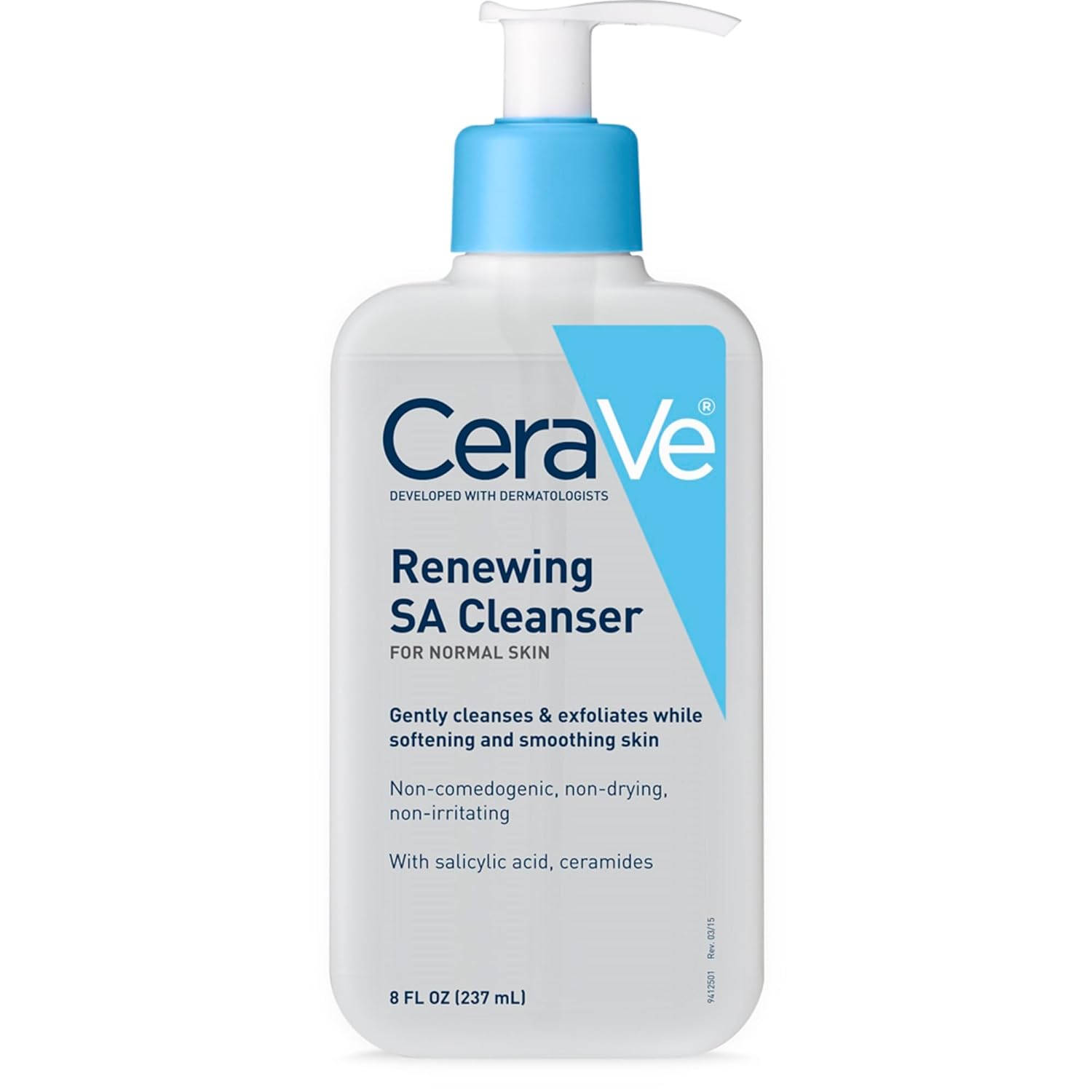
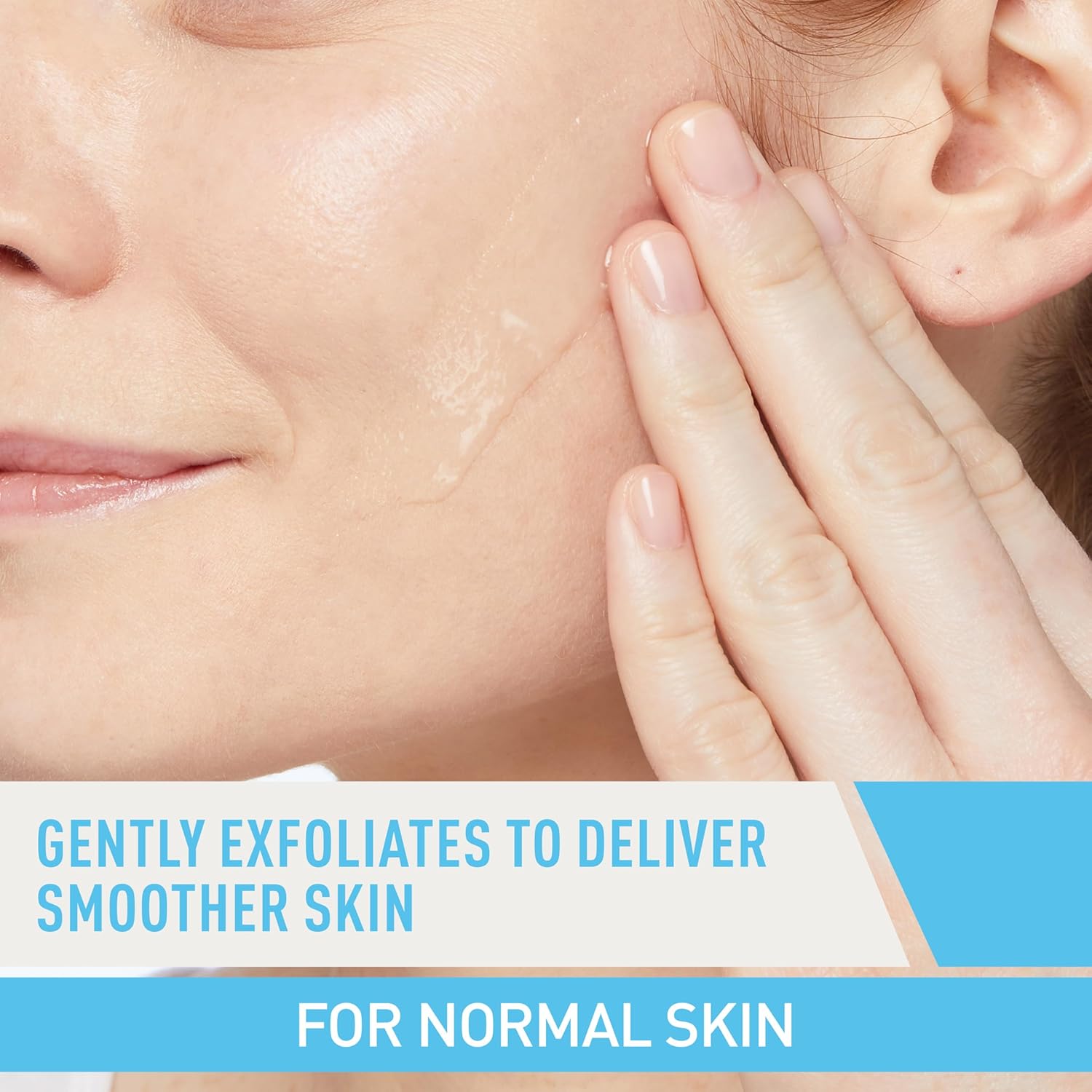
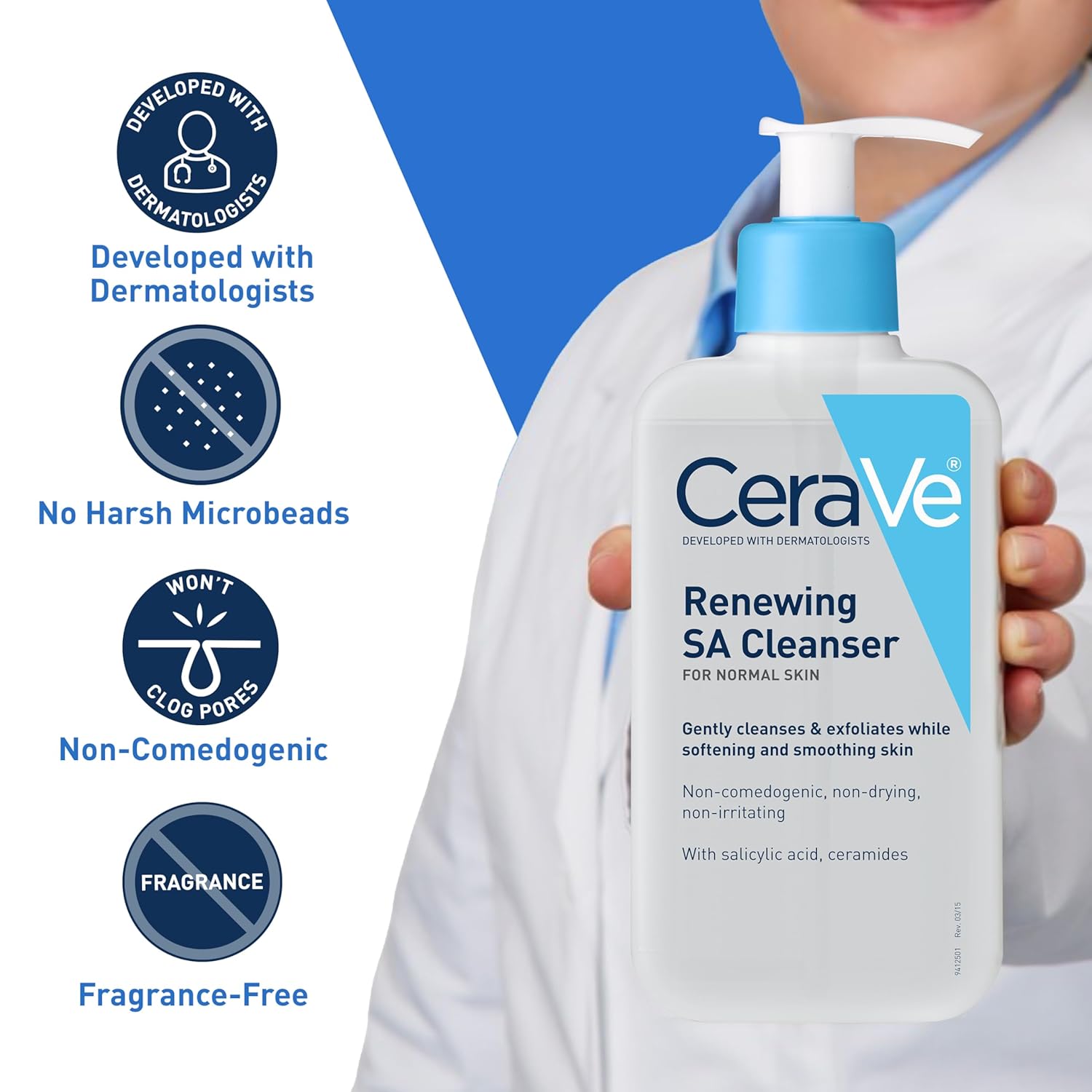
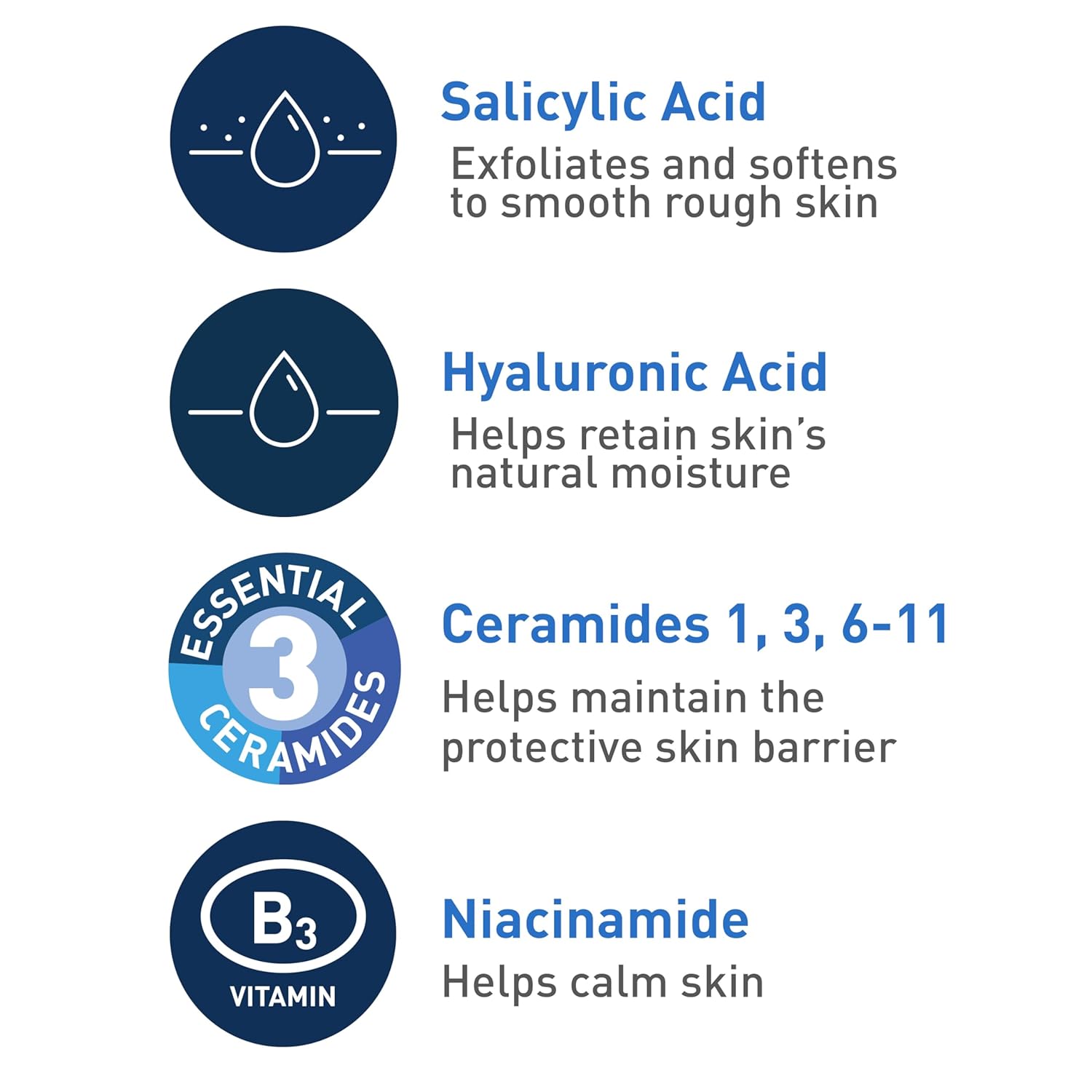
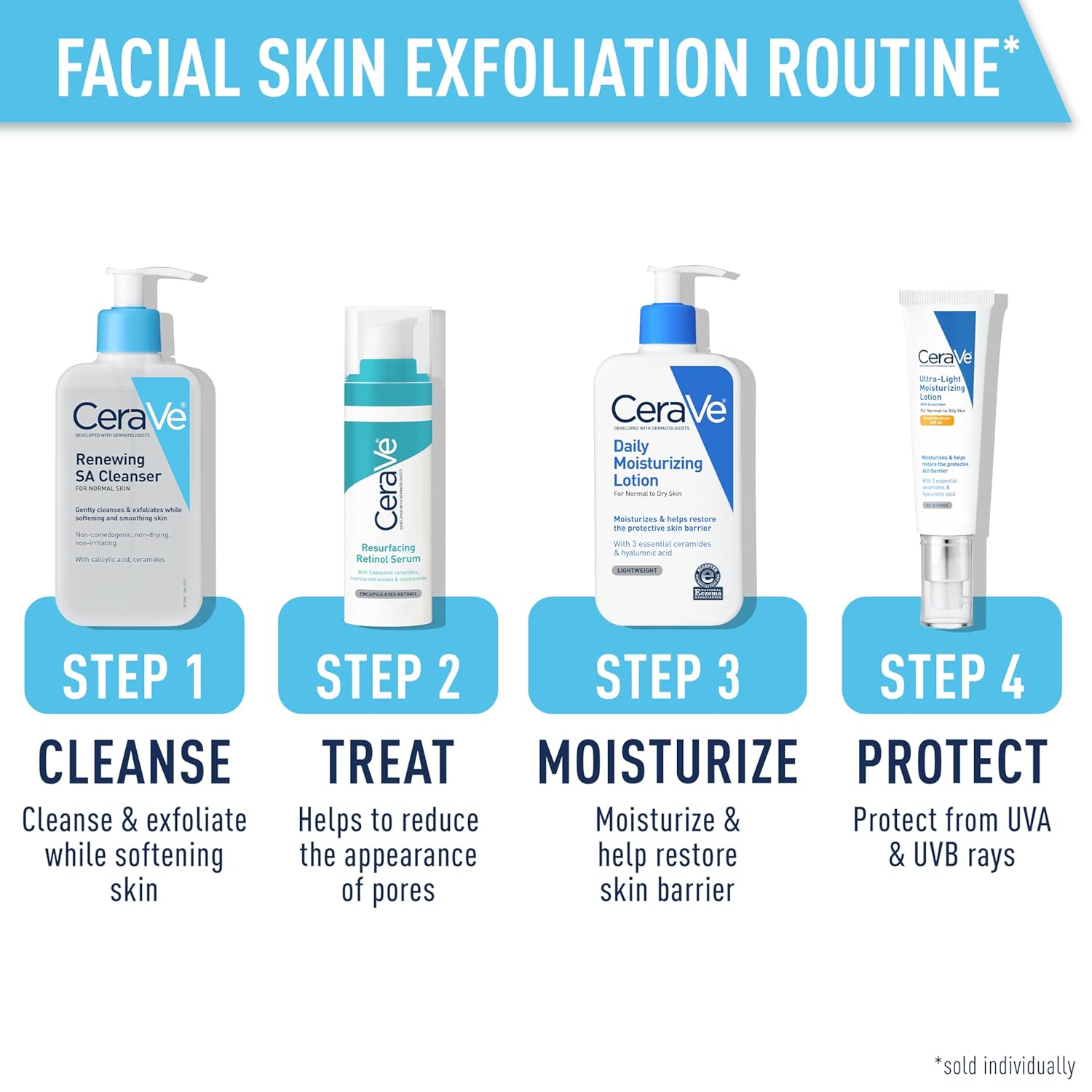
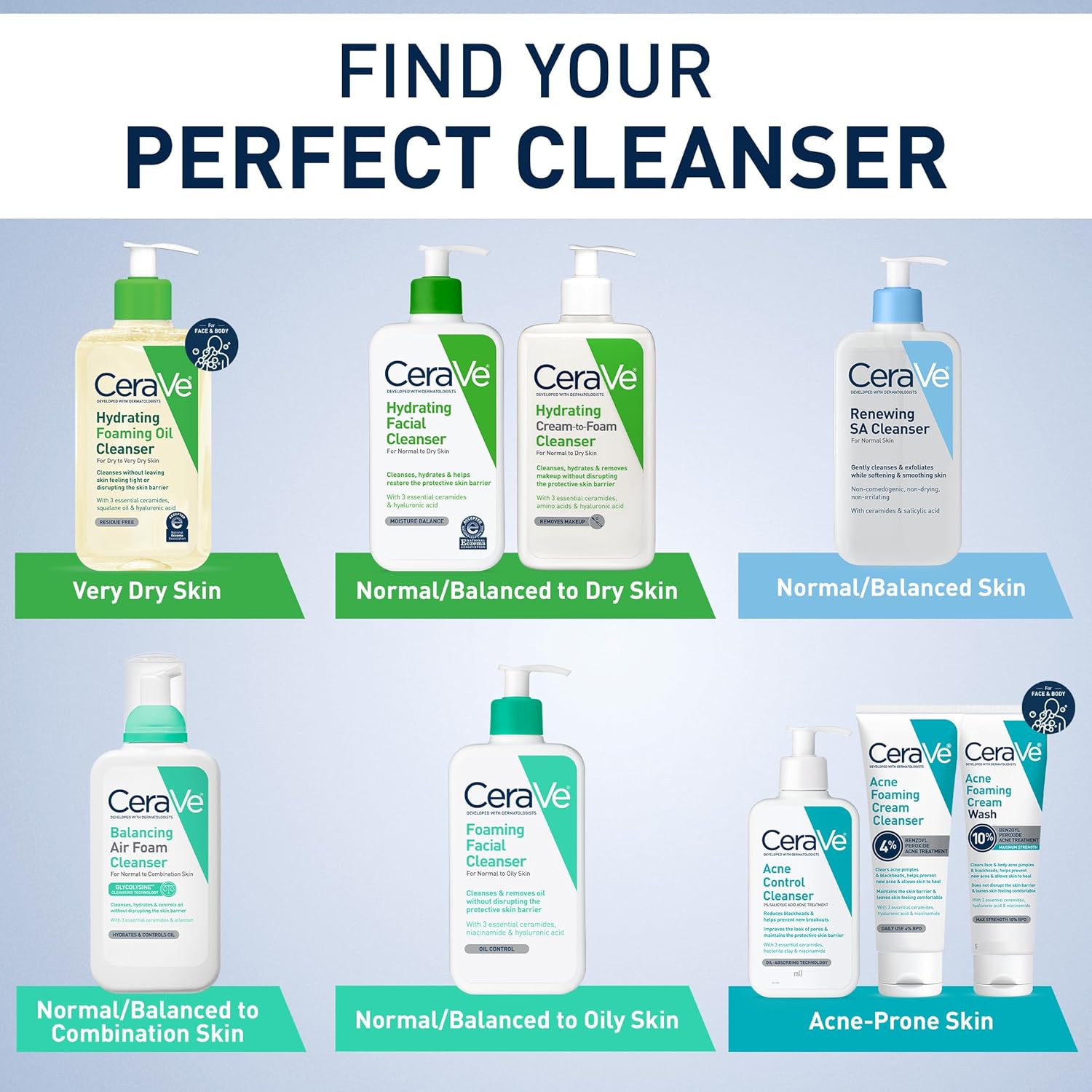

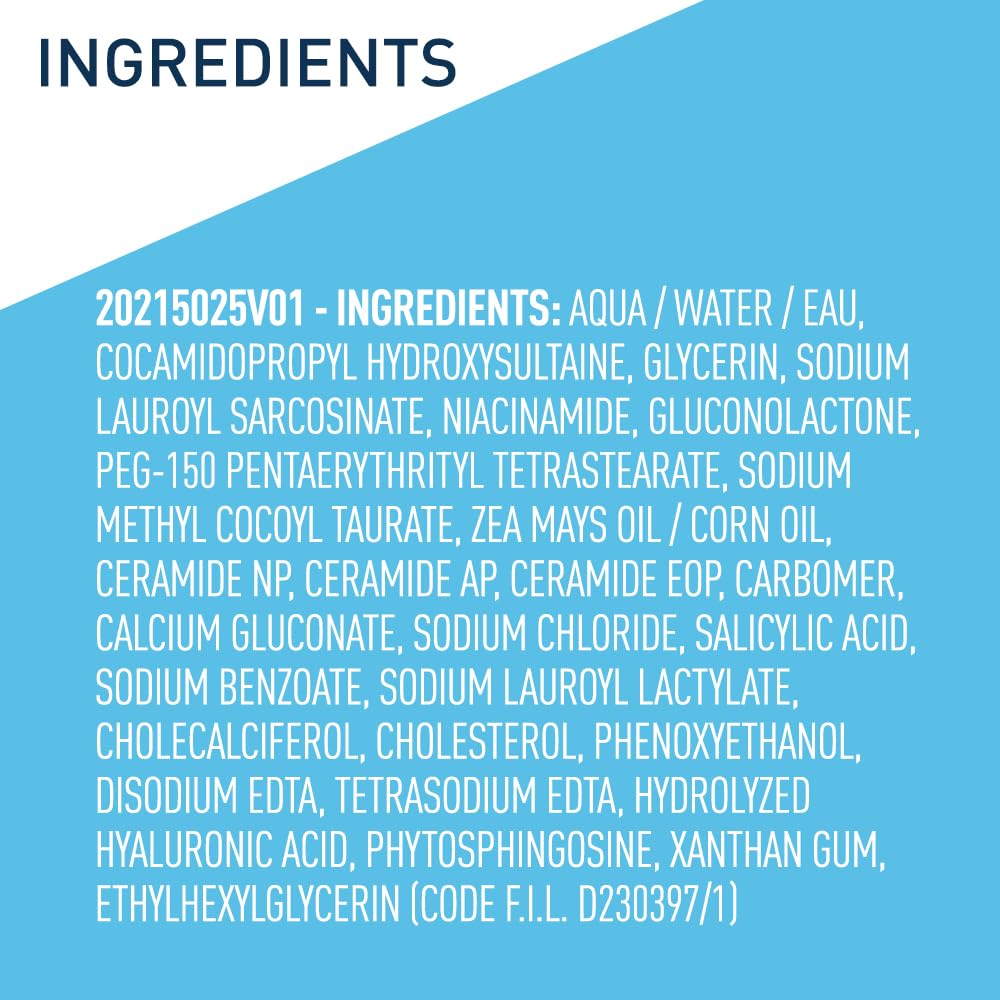
Price: $15.99 - $11.99
(as of Sep 09, 2025 07:58:39 UTC – Details)




